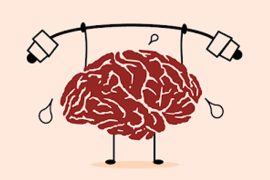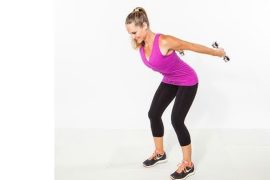Exercise is important not only for maintaining a healthy weight but also for lowering stress and maintaining strong bones and joints. In order to treat health issues including osteoporosis, diabetes, and hypertension, certain actions could also be suggested. However, what if you’re too exhausted to engage in any physical activity? Extreme exhaustion is a symptom of Chronic fatigue syndrome. You will be too exhausted to do anything, even after you have rested. It also affects your capacity to focus and the quality of your sleep. So, is working out the answer? In honor of World Chronic Fatigue Syndrome Awareness Day on May 12, we discuss the potential benefits of exercise for those who suffer from this chronic illness.
Chronic Fatigue Syndrome:
Extreme fatigue may be a symptom of myalgic encephalomyelitis, often known as chronic fatigue syndrome. Anyone can be impacted, even kids. The UK’s National Health Service claims that this chronic illness can cause you to feel so exhausted that it can be challenging to perform everyday tasks like taking a shower or going to work. It may result in sleeplessness and other sleep issues. Those who suffer from this illness may sleep excessively and still feel as though they haven’t slept well. Additionally, it can cause brain fog, which impairs one’s ability to focus and think clearly. Disabling weariness can interfere with a person’s social, professional, and personal life since it is unpredictable.
Can those who suffer from Chronic Fatigue Syndrome benefit from exercise?
Along with improving cardiovascular endurance and muscle strength, physical activity may also assist to alleviate the symptoms of Chronic Fatigue Syndrome. The Royal Australian College of General Practitioners, however, advises such exercises should be performed under supervision. When exercising when suffering from chronic fatigue syndrome, extreme caution is required. If done properly, gentle, well-paced exercise can have certain advantages.
Advantages:
- Enhances circulation: Mild activity promotes improved oxygen and blood flow to tissues, which may lessen fogging in the brain.
- Prevents muscular deconditioning: Prolonged inactivity can cause stiff joints and weak muscles. According to the expert, “light activity helps maintain basic strength and mobility without overexertion.”
- Promotes better sleep: People with Chronic Fatigue Syndrome frequently have poor sleep quality, which may be improved by relaxing exercises like stretching or even deep breathing.
- Pain relief: Mild mobility exercises and stretching might help ease stiffness and muscle aches.
- Enhances mood: Even mild exercise can boost the synthesis of feel-good hormones like serotonin and endorphins. According to the expert, “exercise can help manage anxiety and depression that often accompany chronic illness.”
Chronic Fatigue Syndrome Exercises
Exercise has advantages, but that doesn’t imply you have to work out hard or endure exhaustion. Additionally, according to the US Centers for Disease Control and Prevention, many patients with Chronic Fatigue Syndrome are susceptible to dizziness, particularly when standing. Therefore, it is best to avoid standing workouts, especially those that require no support.
1. Belly (diaphragmatic) breathing
- You can attempt this approach by lying down or sitting comfortably.
- Put a hand on your belly and another on your chest.
- Breathe in through your nose until your abdomen and ribs rise.
- Feel your tummy gradually drop as you release the breath slowly through your mouth.
- For five to ten breaths, repeat the instructions.
2. Marching while seated
- With your feet flat, sit up straight in a nice, supportive chair.
- Raise your right knee a couple of inches, then bring it down.
- Switch to the left knee.
- Perform ten to fifteen slow repetitions on each leg.
3. Shoulder rolls when seated
- Keep your arms relaxed and sit up straight.
- Five times, roll your shoulders forward in little circles.
- Roll them backward five times after that.
4. Push-ups on the wall
- Try standing with assistance. With your hands on the wall and your arms extended, face a wall.
- Bring your chest slowly toward the wall by bending your elbows.
- Return to the beginning wall push-up posture by pushing.
- Perform 5–10 reps and take breaks as necessary.
5. Pumps for the ankles
- Stretch your legs while sitting or lying down.
- Point your toes aside after flexing them toward you.
- Move your ankle away from you after flexing it in your direction.
- Slowly repeat the steps 15–20 times.
6. The cat-cow posture in yoga
- Lower yourself to your hands and knees. If you feel the need, you can utilize a cushion.
- Inhale, arch your back, and raise your gaze.
- Exhale, tuck your chin in, and round your spine.
- Do this five to eight times.
7. Side bends while seated
- With your hands by your sides, take a seat in a chair.
- Lean left and lift your right arm above your head.
- Return and switch sides after holding for 5 to 10 seconds.
- For each side, repeat three to five times.
Exercise advice for people with chronic fatigue syndrome
For those who suffer from Chronic Fatigue Syndrome, physical exercise requires significant caution. Here are some pointers:
- If necessary, begin with simply one or two exercises per session.
- In between these workouts, take a break.
- Never push through your weariness or suffering since it doesn’t work.
- Exercise should be performed with proper posture since proper form is significantly more important than repetitions.
- Use objects for support, such as walls, chairs, or cushions.
- Recognize your boundaries and maintain your energy levels.
- Before and after engaging in chronic fatigue syndrome workouts, drink water. “If necessary, eat a banana or other small, energy-boosting pre-workout snack before light movement.”
Exercise should be done with caution if you have chronic fatigue syndrome. The intention is to assist your health in a gentle way without making your problems worse. People with Chronic Fatigue Syndrome may experience crashes during intense workouts or high-impact activities. So, choose gentle moves and breathing instead. Consult a physician or physiotherapist prior to exercising.
Disclaimer:
The information contained in this article is for educational and informational purposes only and is not intended as a health advice. We would ask you to consult a qualified professional or medical expert to gain additional knowledge before you choose to consume any product or perform any exercise.







